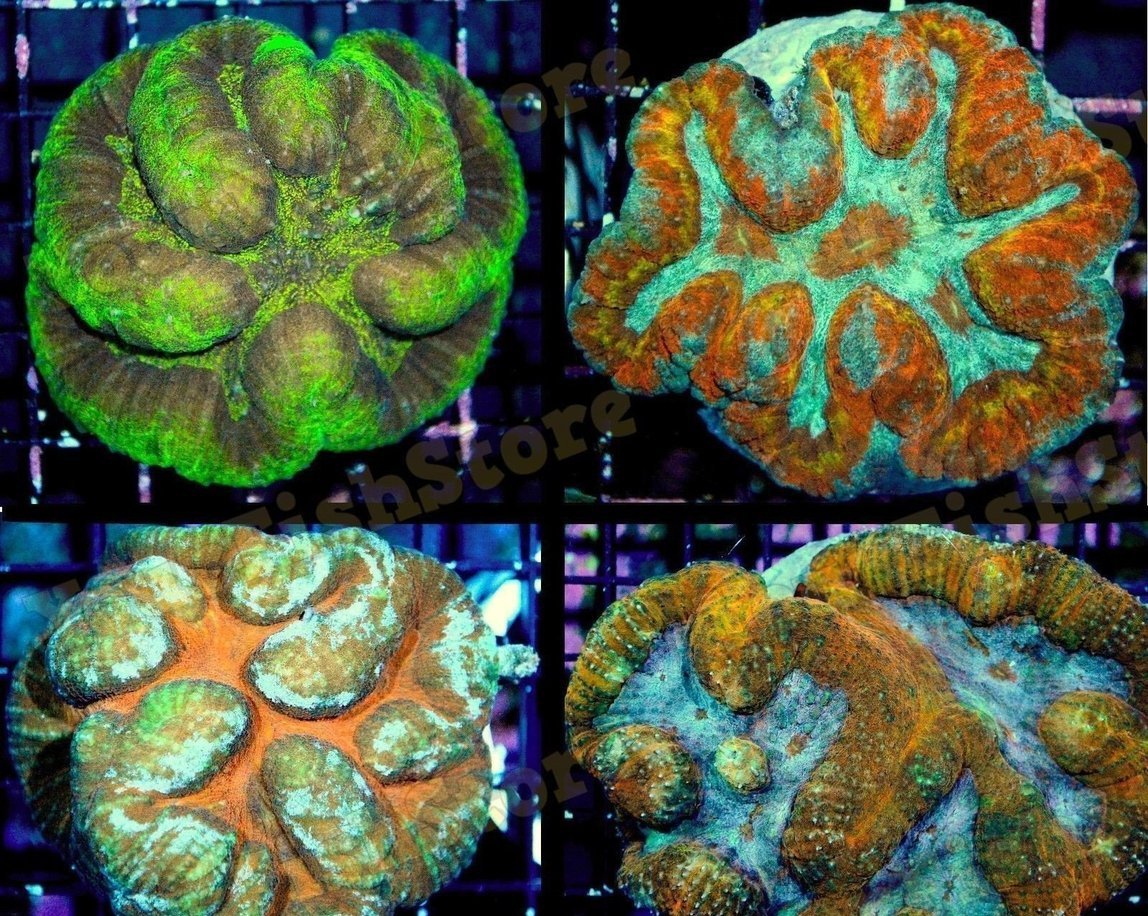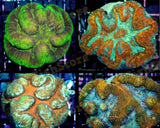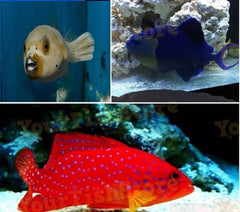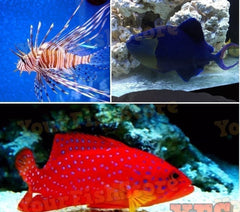X2 Assorted Symphyllia Brain Coral Med

x2 ASSORTED SYMPHYLLIA BRAIN CORAL MED - FREE SHIPPING
The Symphyllia Brain Coral Symphyllia sp., popularly known as the Closed Brain Coral or Dented Brain Coral, is attractive and hardy. Symphyllia Corals include some of the most richly colored aquacultured corals available today. With dynamic colors and color combinations, similar to the classy Acan Lord Acanthastrea lordhowensis, these captive bred specimans can make an awesome reef aquarium showpiece.
In the wild, the Symphyllia genus forms flat or dome shaped colonies. These colonies have wide valleys that meander in curves and twists throughout the coral. At times the valley can be so spacious, such as on a new, single polyp, that it can look like a completely different species. Each polyp has a unique shape and some have bumps, or ridges in the middle of the polyp. Some of the names they are known for are Symphyllia Brain Coral, Brain Coral, Dented Brain Coral, Closed Brain Coral, Symphony Coral, Meat Coral, Wrinkle Coral, Pacific Cactus Coral, and Closed Lobophyllia.
Symphyllia sp. are usually creamy or pastel hues of greens, reds, creams, and muted browns with the valleys often having contrasting colors. At times, brighter green and white combinations can be found. They have been propagated in captivity with great success, leading to a variety of colors and combinations of colors. The names used by reef farmers are quite creative, such as Candy Apple Red Symphyllia, Minty Green Symphyllia, Red Twister, Baby Blue, Bleeding Apple Rainbow, Pink Rim Blue, Pink and Red Symphyllia, Nuclear Green, Boiling Point, and so forth.
The Symphyllia Brain Coral Is very closely related to the Lobophyllia genus, and though less common, they require much of the same care. This genus of corals can be confused with Lobophyllia, but are distinguished by the skeletal structure. Symphyllia corals have corallite walls that are joined or fused together, rather than having the separate corallite walls found on Lobophyllia species.
QUESTIONS & ANSWERS
Have a Question?
Be the first to ask a question about this.














